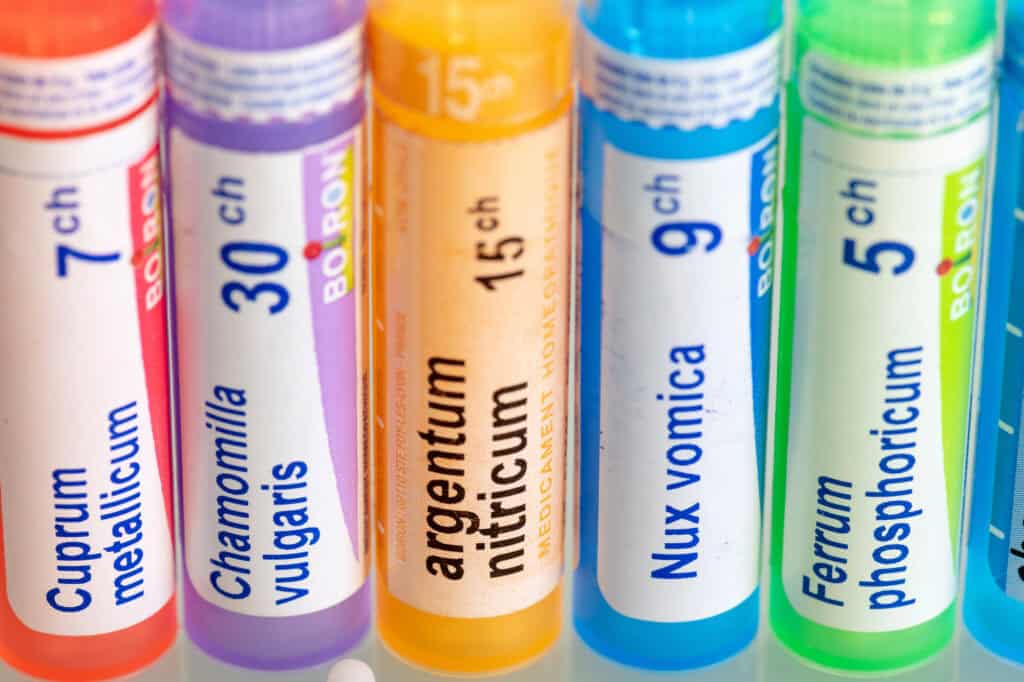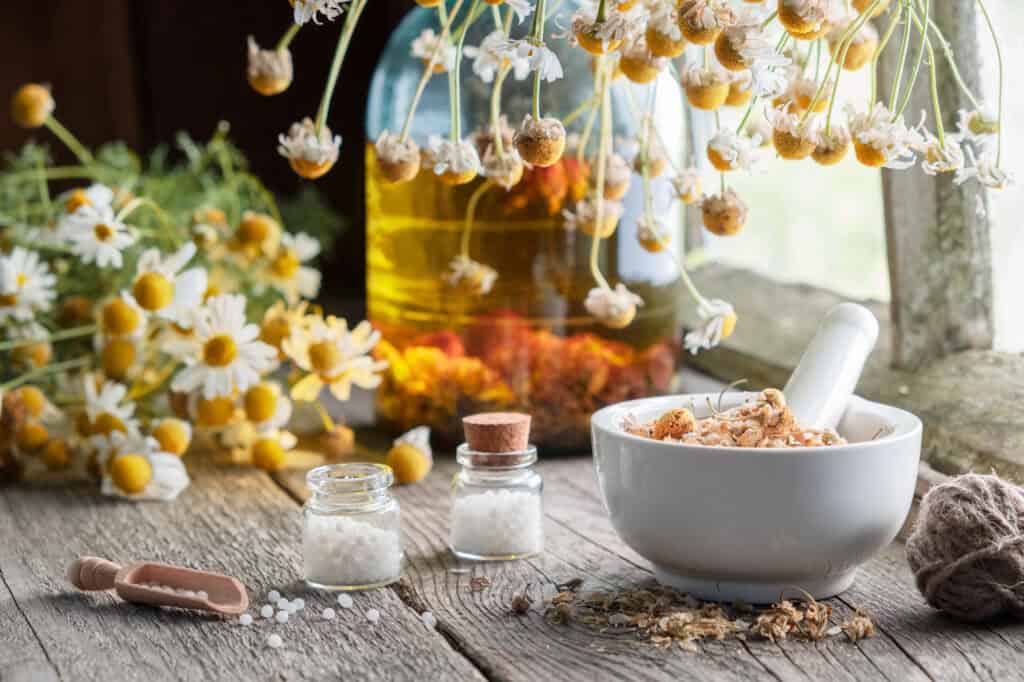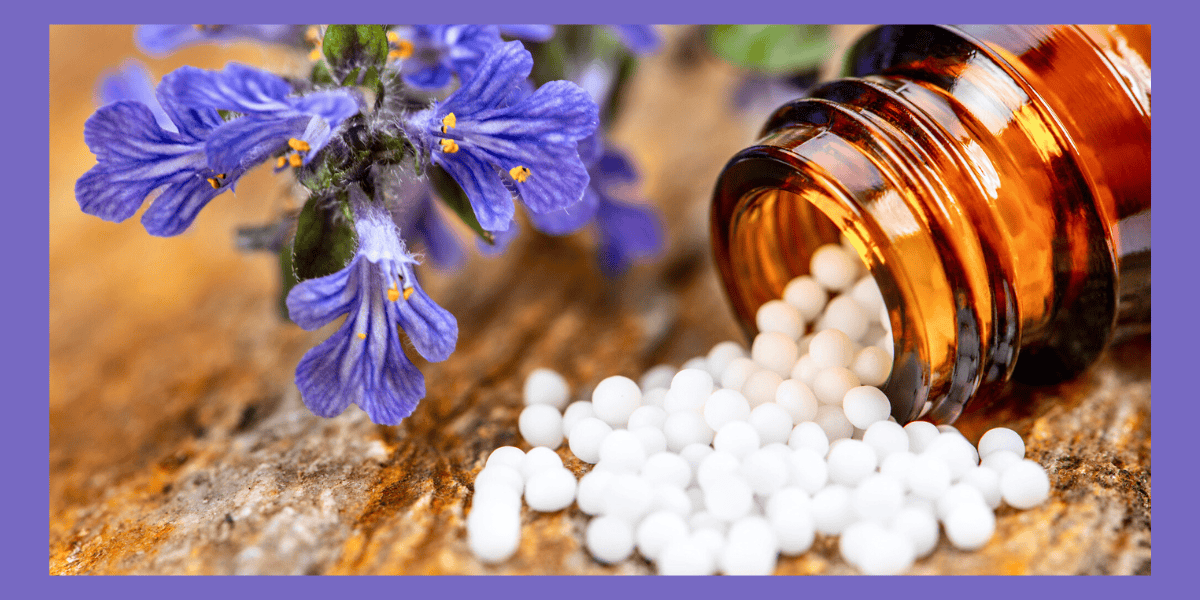EDITOR’S SUMMARY: What if today’s medical thinking reclaimed a wisdom it once held—that healing rarely requires force, but resonance? Homeopathy reveals the quiet persistence of a system born of observation, shaped by necessity, and still practiced by millions today. Beyond sugar pills and skepticism lies a deeper tale: one where diluted substances may hold disproportionate power, and where “like cures like” is more than a poetic phrase—it’s a lens that challenges everything from antibiotics to opioids. Whether you call it outdated or ahead of its time, homeopathy just might be the most misunderstood medicine of the modern era.
By Kirsten Steinman
Homeopathy, one of the world’s most widely used forms of integrative medicine, has been a part of healthcare for over two centuries. Despite being considered controversial in some circles, it has gathered the trust of more than 200 million people worldwide. Homeopathy was founded in 18th-century Germany on a simple, yet revolutionary principle: “like cures like,” or the Law of Similars. A substance that causes specific symptoms in a healthy individual can be used to treat those same symptoms in someone who is unwell. For instance, red onion (Allium cepa), which causes stinging eyes and a runny nose, might be used to alleviate similar symptoms in a cold or allergy.
Remedies are made from plants, minerals, or even trace amounts of toxins, and can be delivered in the form of sugar pills (to be put under the tongue), gels, creams, capsules, or tinctures. The first step in creating a homeopathic medicinal preparation is crushing or dissolving raw materials in water or alcohol, and then diluting the substance several times with water and vigorously shaking it—known as succussion—until the desired dilution level is achieved. The result is a substance that contains no detectable molecules of the original ingredient. Homeopathy follows the “law of minimum dose”: the lower the dose of medication, the greater its effectiveness. At such high dilutions, adverse reactions are rare. In fact, a brief intensification of symptoms after starting a correctly chosen remedy is seen as a positive sign.
Much of the criticism aimed at homeopathy relates to mislabeling and misuse, rather than the remedies themselves. Herbal preparations can be falsely mistaken as homeopathic, which is why it’s important to read labels closely, research products thoroughly, and choose reputable brands. A Certified Homeopathic Seal will help identify trusted products that meet national standards, though it’s not expected until 2027. In the meantime, homeopathic treatments for mild ailments such as coughs, sore throats, muscle soreness, stomachaches, and headaches are readily available over the counter at many drugstores and natural grocers. However, more serious or chronic conditions should be treated by a certified homeopath, alongside an allopathic physician, if desired. Certain remedies for more serious types of ailments can only be ordered by certified homeopathic prescribers.
In addition to the principle of “like cures like,” homeopathy incorporates a related concept known as isopathy. This method uses the exact cause or byproducts of an illness to create a treatment for that same illness. Remedies can be made from diseased tissues or bacteria (nosodes), or from healthy organs and secretions (sarcodes). This concept underpins conventional immunotherapy and modern vaccination; for example, vaccinating with measles to protect against measles. In fact, Samuel Hahnemann, the founder of homeopathy, supported vaccination and introduced his homeopathic system the same year that Edward Jenner began practicing immunization. Hahnemann’s contributions to medical practice were so significant that C. Everett Koop, the 13th U.S. Surgeon General, remarked, “No individual has done more good to the medical profession than Samuel Hahnemann.”
One of the most compelling modern examples of isopathy occurred during a leptospirosis epidemic in Cuba in 2007. In the wake of a devastating hurricane season, the island lacked the time and resources to produce enough of the conventional vaccine. As a last resort, public health officials turned to a homeopathic prophylaxis made from four inactivated strains of Leptospira. Within a year, 97% of the population over the age of one had received the treatment. The result: an 84% drop in disease prevalence in treated areas, while low-risk, untreated regions saw a 21% increase. Notably, the authors of the trial were not homeopaths—they selected this method out of practical necessity. The homeopathic product took less than two weeks to manufacture (compared to six months for the vaccine), cost just 2% of the price, and was easier to store and administer. Its success led to nationwide administration to over 11 million people, nearly eradicating the disease—an outcome never before achieved with the conventional vaccine.
Homeopathy has a deeply rooted presence in many regions across the world. In Europe, for instance, 40 out of 42 countries use homeopathic remedies, with over 70 hospitals in Germany, France, Sweden, and Italy incorporating it into their healthcare systems. In France, a remarkable 95% of pediatricians and general practitioners and 75% of midwives prescribe homeopathic treatments, a testament to its mainstream acceptance. Switzerland even voted in 2009 to include homeopathy in its national health insurance plan. Similarly, in India, where homeopathy is a first-line treatment for millions, over 100 million people rely on it exclusively for their healthcare.

When you start exploring homeopathy, you’ll quickly notice remedies come with curious labels like 30C (or CH), 6X, or 6T. These numbers and letters tell you how the remedy is prepared and how strong or “potent” it is.
- The number (like 6 or 30) refers to how many times the original substance has been diluted and shaken, a process called potentization. The higher the number, the more diluted the remedy is.
- The letter indicates the scale of dilution:
- C (centesimal) indicates the substance is diluted 1 part in 100, repeated that many times (e.g., 30C means diluted 1:100, 30 times).
- X or D (decimal) means diluted 1 part in 10, repeated that many times.
- T (trituration) usually refers to a remedy prepared by grinding the original substance with lactose powder, often used for very low potencies.
Choosing the right potency depends on the condition, how sensitive you are, and how often you need to take the remedy. Lower potencies (like 6X or 6C) are generally milder and used for more physical, chronic issues. Higher potencies (like 30C or 200C) are more suited for acute or deeper emotional symptoms but are taken less frequently. If you’re new to homeopathy, it’s best to start with a moderate potency like 30C and observe how your body responds. Consulting a certified homeopathic practitioner can help tailor the dosage and remedy to your unique needs.
Here in the U.S., the landscape is quite different from European countries where homeopathy is integrated into mainstream care. Skeptics argue that there’s insufficient scientific evidence to support its efficacy beyond the placebo effect, and as a result, American medical institutions are hesitant to invest in further research. However, several rigorous, double-blind, randomized studies have demonstrated statistically significant differences between homeopathic treatments and placebos, challenging the notion that their effects are purely psychological. While the mechanism remains elusive, this body of evidence suggests that homeopathy is more than just a placebo. From the British Medical Journal, “Homeopathy,” one researcher noted:
“It is well known that many homoeopathic medicines are ultramolecular—that is, they are diluted to such a degree that not even a single molecule of the original solute is likely to be present. As drug actions are conventionally understood in biochemical terms, homoeopathy presents an enormous intellectual challenge, if not a complete impasse. Many scientists have suggested that the clinical effects of homoeopathic medicines are solely due to the placebo effect. However, there have been rigorous, replicated, double blind, randomised trials showing significant differences between homeopathy and placebo tablets.”
Meanwhile, conventional medicine in the U.S. faces its own challenges. Over 55% of antibiotics are prescribed for non-bacterial infections, contributing to a dangerous rise in antibiotic resistance, disruption to the microbiome, and in some cases, grave side effects. Every year, more than 2.8 million Americans contract antimicrobial-resistant infections, leading to over 35,000 deaths.To combat this, the American Institute of Homeopathy—the oldest national physician organization in the United States—advocates for greater integration of homeopathy, particularly in cases like acute otitis media and ear infections, in children. This recommendation considers that in high income countries, most cases of acute ear infections subside on their own within three days without complications. Nonetheless, in the U.S., Canada, and Australia, antibiotics are prescribed in up to 95% of cases—compared to just 56% in the Netherlands. A Cochrane review found no difference in severe complications between children who received antibiotics and those given placebos, although the antibiotic group experienced more side effects, including vomiting, rash, and diarrhea. One promising solution? Allow doctors, healthcare providers, and hospitals to offer parents the option of complementary care. A randomized controlled trial found that when parents were offered antibiotics plus homeopathic ear drops for their childrens’ ear infections, parents were 20% less likely to fill their child’s antibiotic prescription than those who were given antibiotics alone.
In a country grappling with the opioid crisis, homeopathy offers a promising alternative for those suffering from chronic pain—a leading cause of disability in the U.S., and an affliction that affects more Americans than cancer, heart disease, and diabetes combined. It is also the most common reason people seek healthcare. While opioids and non-steroidal anti-inflammatory drugs are often prescribed, they can carry serious risks: addiction, dependence, potential overdose, heart issues, and stomach ulcers. Homeopathic remedies, by contrast, can be used long-term without adverse effects. Today, the United States consumes over 80% of the world’s opioids while only making up 4.4% of the world’s population.In contrast, a country like France, where there’s more focus on preventive care and multimodal approaches to pain management such as homeopathy, report much lower opioid use and overdose rates. From “Homeopathy for Pain Management”:
“In a large-scale study in France, where national health insurance covers homeopathic as well as conventional primary-care doctors, the former prescribed fewer opioids (and half as many nonsteroidal anti-inflammatory drugs) for musculoskeletal disorders while providing better results in terms of pain reduction and quality of life. Further, there is some evidence to suggest that homeopathy can work faster than conventional pain medications or reduce the need for them, without danger of dependence or withdrawal symptoms. There is also research to suggest that homeopathy can work better than placebo in reducing pain, for example from endometriosis, joint pain and stiffness, and hemorrhoids.”
Though natural therapies like acupuncture, prenatal massage, and herbal remedies are widely used by pregnant women in the U.S., homeopathy is often overlooked. 90% of pregnant women report using some form of integrative medicine, and most turn to vitamins, minerals, or nutritional supplements. Only about 4% report using homeopathy—largely due to lack of awareness of its potential benefits for morning sickness, fatigue, labor, and delivery. Today, commonly used drugs like acetaminophen (Tylenol) are under scrutiny for their potential links to neurodevelopmental and respiratory issues in developing fetuses. In 2021, a global group of experts drafted a statement urging pregnant women to avoid acetaminophen, citing risks to fetal endocrine systems and long-term health. Given this context, homeopathy may provide a safer alternative, as studies show that remedies like Viburcol and Belladonna not only rival the effectiveness of Tylenol, but are also better tolerated with fewer side effects. As noted from “Maternal use of acetaminophen during pregnancy and neurobehavioral problems in offspring at 3 years: A prospective cohort study”:
“Although acetaminophen has been shown to cross the placental barrier and therefore may directly impact fetal development, the mechanisms of action for the effect of acetaminophen on fetuses are unknown. Research in mice models has suggested acetaminophen use during pregnancy may impact the endocannabinoid system, responsible for central nervous symptom development, and the fetal liver, which is where the first hematopoietic stem cells (HSC) are developed before HSC is created in bone marrow. If acetaminophen impacts HSC, it may affect immune development, which in turn can impact neurodevelopment. Acetaminophen use during [pregnancy] may also disrupt the maternal and fetal gut microbiota leading to neurodevelopmental problems.”
Homeopathy has also shown promise in addressing infertility. In a study out of India, “Effectiveness of Homoeopathic Treatment in Female Infertility,”individualized remedies helped 27 out of 40 women with PCOS, endometriosis, or pelvic inflammatory disease successfully conceive. Midwives across Europe also embrace homeopathy as part of holistic maternal care, using it during pregnancy, labor, and postpartum recovery. Remedies such as Caulophyllum and Arnica are used to ease labor pains and promote healing. Allopathic medications are typically considered only after safer, less invasive options have been exhausted. This integrative approach contrasts sharply with U.S. practices, where only 12% of births are attended by midwives—compared to 100% in Norway and the majority in the UK and France. Unsurprisingly, countries with robust midwifery systems tend to have far lower maternal mortality rates.
The contrast doesn’t end with maternal health. The U.S. ranks lowest among developed nations in life expectancy, despite spending more on healthcare than any other country. A third of American deaths are due to medical error, according to “Johns Hopkins study suggests medical errors are third-leading cause of death in U.S.” As chronic disease continues to rise—affecting 50% of the population and driving up 85% of healthcare costs—patients are increasingly turning to integrative medicine. With overworked physicians spending less than 24 minutes with each patient, homeopathic practitioners typically offer 1- to 2.5-hour consultations, exploring everything from lifestyle and diet to emotional resilience. Treatment plans often include dietary recommendations and the avoidance of alcohol, caffeine, and processed foods.

Bridging Old and New
The growing interest in mind-body medicine in the U.S. is less of a new trend and more of a return to roots. Homeopathy, in fact, was established in America well before the dominance of conventional medicine. It gained widespread popularity in the 19th century, particularly for its success in treating epidemic diseases such as cholera, yellow fever, and typhus. The first homeopathic medical college opened in Allentown, Pennsylvania in 1835, and by the end of the century, over 20 such colleges had been established across the country. So what changed?
In 1847, the American Medical Association (AMA) was founded and immediately adopted an adversarial stance toward homeopathy. Because the mechanisms behind homeopathic treatment weren’t fully understood, conventional doctors, through the AMA, launched a campaign labeling it quackery, cult-like, and unscientific. Pharmaceutical companies also entered the fray, targeting homeopaths and cutting into their market share by influencing medical journals. Then in 1910, the Carnegie Foundation issued the now infamous Flexner Report—an assessment of American medical schools led by Abraham Flexner in collaboration with key members of the AMA. Dr. William Osler—widely considered the father of modern medicine—was a vocal critic of the report, fearing it would lead to physicians becoming increasingly disconnected from the realities of patient care. He famously believed that “one of the first duties of the physician is to educate the masses not to take medicine.”
The Flexner Report endorsed allopathic medical education and research while discrediting homeopathic institutions, leading to their eventual decline. But the shift came at a cost. As medicine became increasingly focused on scientific advancement and institutional education, the humanistic, healing relationship between doctor and patient began to erode. An example of this is illustrated in the SUPPORT trial, which involved $14 million in funding and found that more than 40% of families were dissatisfied with how their loved ones were cared for at the end of life. As integrative medicine gains traction and patients seek options that align with both tradition and science, homeopathy is once again entering the conversation—not as an alternative, but as a complement to modern care. All around the world, millions rely on homeopathy, not because it’s trendy, but because it has worked for them. In the words of the late Mark Twain, American writer, humorist, and essayist:
“The introduction of homeopathy forced the old school doctor to stir around and learn something of a rational nature about his business. You may honestly feel grateful that homeopathy survived the attempts of the allopaths to destroy it.”
It’s increasingly clear that homeopathy deserves a seat at the table in the national conversation on health and wellness. As the U.S. healthcare system grapples with the challenges of overmedication, chronic illness, and healthcare accessibility, homeopathy offers a holistic, cost-effective, and patient-centered solution. With millions around the world turning to homeopathic treatments—and a growing body of evidence supporting its use—it seems about time for the U.S. to embrace a broader definition of healing. If you are interested in exploring this path, connecting with a certified homeopathic practitioner or learning more about the practice can be a significant first step. To begin, visit the North American Society of Homeopaths or Homeopathic Academy of Naturopathic Doctors.
~
Published on May 22, 2025.
If you’ve found value in this article, please share it!
To support the research and health education of AVFC editorial, please consider making a donation today. Thank you.

